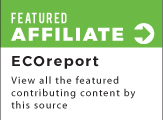

A new multiyear study from scientists at the Woods Hole Oceanographic Institution (WHOI) has shown for the first time how changes in ocean temperature affect a key species of phytoplankton. The study, published in the October 21 issue of the journal Science, tracked levels of Synechococcus—a tiny bacterium common in marine ecosystems—near the coast of Massachusetts over a 13-year period. As ocean temperatures increased during that time, annual blooms of Synechococcus occurred up to four weeks earlier than usual because cells divided faster in warmer conditions, the study found.
Shifts like these could have a major impact on marine ecosystems worldwide, says WHOI biologist Heidi Sosik, who initiated the study. “Synechococcus and other phytoplankton are sentinels. They can tell us how an ecosystem is responding to shifts in climate,” she says. “If ocean temperatures continue warming over the next century, some ecosystems could become more and more dominated by small phytoplankton, eventually leading to shifts that could affect the livelihoods of larger species like fish, whales, and birds.”
That shift to smaller phytoplankton isn’t a sure thing, however. Although Sosik and her colleagues saw that Synechococcus cells reproduced more quickly than usual as conditions warmed, the overall size of the phytoplankton bloom didn’t increase much during the course of the study. As the bacteria grew more quickly, the team found, they also were consumed more quickly by tiny protozoa, viruses, and other single-celled organisms that prey on the Synechococcus. As a result, the overall levels of the bacteria stayed roughly the same from year to year, although the timing of the bloom shifted earlier or later as the water temperature changed.
Continue reading at Woods Hole Oceanographic Institution
Photo: En route to the Martha’s Vineyard Coastal Observatory (MVCO) offshore tower, first mate Ian Hanley of the WHOI coastal research vessel Tioga prepares for instrument deployments
Photo by: Sean Whelan, Woods Hole Oceanographic Institution
Terms of Use | Privacy Policy
2016©. Copyright Environmental News Network




